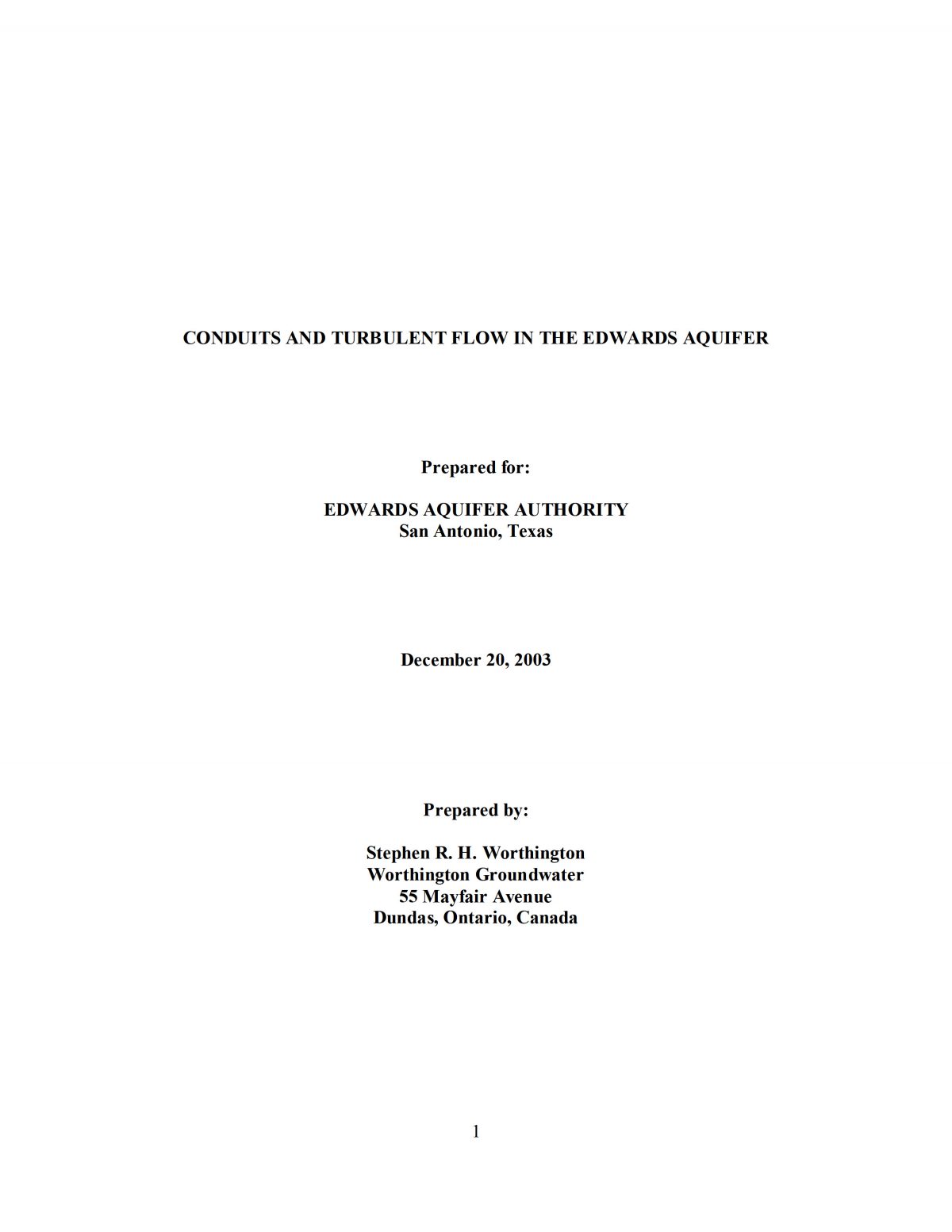Conduits and Turbulent Flow in the Edwards Aquifer

| Author | Steve Worthington |
| Year | 2003 |
| Description | Description of the Edwards Aquifer Balcones Fault Zone as a typical karst aquifer and recommendations for locations of conduits in the MODFLOW model |
| Publisher | Worthington Groundwater |
| Location | Edwards Aquifer, Balcones Fault Zone |
| Cover | View Download |
| File | View Download |
| Summary |
|
The purpose of this study was to address the existence of aquifer-scale conduit networks in the Edwards Aquifer and how they could be incorporated in the model of the aquifer constructed by the U.S.G.S. The study was completed in April 2004 by Stephen Worthington of Worthington Groundwater, Toronto, Ontario, Canada. (Report is dated December 2003.) This report has recommendations for locations of conduits in the Edwards Aquifer Balcones Fault Zone based on tests conducted from a literature review. [Excerpts from the report:] a) What are the characteristics of aquifer-scale conduit networks? b) What tests can be applied to determine whether there are aquifer-scale conduit networks in the Edwards Aquifer? c) where might such conduit networks be located and how could they be incorporated in the USGS numerical model?… The median lag between rainfall and maximum water level was 60 days, but there is much variability….[There were] two distinct responses in the aquifer. A few wells in the recharge zone together with Comal and San Marcos Springs show a rapid and large response, with peak levels being reached within a few days of the storm. The peak responses in the springs are driven by high heads in the conduits that feed the springs, with the pressure pulse from the increased water levels in the recharge zone being transmitted quickly to the springs. Conversely, most wells show a much slower and smaller response, with peak water levels being attained after about two months. These wells are not located on conduits and their response is attenuated by the much lower permeability in the matrix and smaller fractures in the aquifer…. Comparison between the Edwards Aquifer and other karst aquifers shows that the scaling effect is similar (Figure 11). The implication is that the Edwards is similarly karstified to other karst aquifers and thus has a well-developed conduit network…. Each of the six tests provides evidence that flow in the Edwards Aquifer is more like an ideal karst aquifer than an ideal porous medium aquifer. This strongly supports the concept that there is an integrated network of conduits connecting the major sinking streams with the springs… [The conclusion] recommended location of conduits for the USGS MODFLOW model. |
Search for Documents
Advance Search
Explore EAA's Scientific Reports
- All Reports
- Modeling
- Hydrology and Hydrogeology
- History
- Groundwater Recharge, Recharge Zone
- Groundwater Movement
- Geomorphology and Caves
- Weather Modification
- Geology
- Water Use and Conservation
- Geochemistry
- Water Resources Planning and Management
- Floods and Drought
- Water Quality
- Climatology
- Surface Water / Groundwater Relationship
- Biology
- Springs, Groundwater Discharge
- Archaeology
- RZ Protection
- Aquifer Levels
- Remote Sensing
- Precipitation
- Overview Studies
